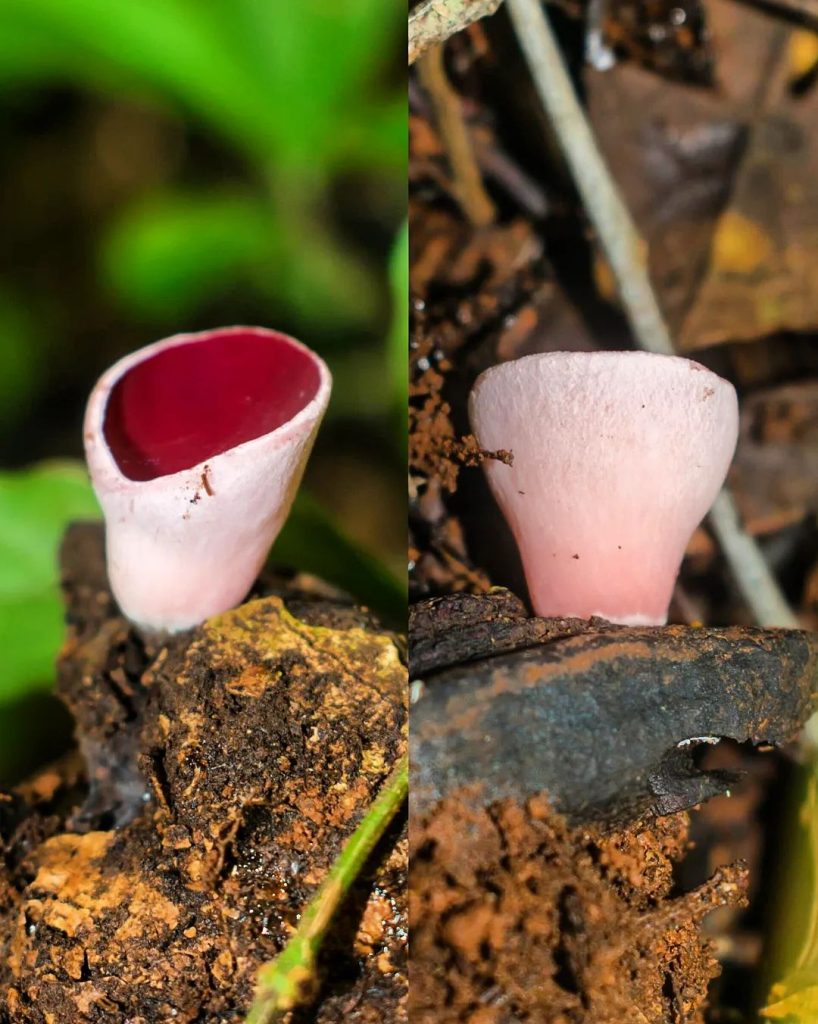Beautiful burgundy/violet little “discs” growing on decaying wood in the forest.
These are fungi of the species Phillipsia domingensis, also known as Mauve Elfcup. This genus belongs to the Sarcoscyphaceae family, which includes so-called “cup fungi”; the species Cookeina speciosa is also in the same family.



They are usually 2 to 5 cm in diameter and 1 to 2 cm in height, and the mycologist Mariana Villani commented on my Instagram post that the presence of this species means that it’s a well-preserved area.
This is the second time I have found this species. The first time was almost exactly 1 year ago (January 2023), and I found only 1 specimen. This day, however, I was lucky enough to find 6 specimens in 3 different areas. It seems that Summer is their peak season around here.


First I found 2 older ones, with a darker violet color, and one of them with a green mold on top (photos below). Then I found this other one, perfect and with a beautiful reddish color (picture above to the right) and soon after I found three more, including a very large one, about 5 cm in diameter (the 3 first pictures), and a young one (picture above to the left).
It was cool to find this species in all stages of growth. I could see that they start growing in a “cup” shape and then open up to a more disc-like shape; the color goes from a more reddish tone to a dark violet, and the hymenophore (underside) starts out pinkish and then turns white.


This species is edible and I decided to collect the last three specimens I found to try. We sautéed them for a few minutes and ate them. The flavor is mild, typical of fungi, nothing too strong, but I thought the texture was great, very firm. It’s a shame they are so small and it’s hard to find them in large quantities to make a real meal.
For more edible mushrooms native to the Atlantic Forest in Brazil check out this post.
📸 Pictures made in January 2024 in São Francisco de Paula, Rio Grande do Sul (Serra Gaúcha, South of Brazil).



